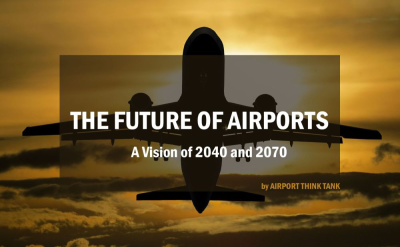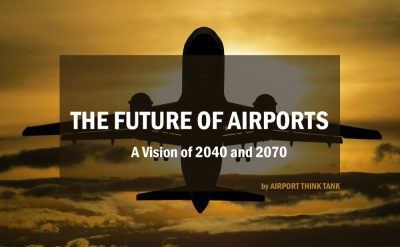
The Future of Airports: Smart Airports at the Era of Information Technologies (Topic No. 3)
The Airport Think Tank of ENAC Alumni published last month the global analysis of The Future of Airports. Each week, discover a new focus on one of the 11 topics of this research initiative.
The information technology revolution in the passenger journey is already here. Passengers are exchanging data with and get personalized information from airlines and airports via their smartphones. These connected technologies provide georeferenced information and can facilitate the journey through large hub airports, improving accessibility to travelers with difficulties. In return, these tools of the Internet of Things (IoT) provides to the airport operator and other stakeholders with precious information on passenger flows.
Airports and air carriers have deployed facial recognition to simplify to expedite the process at the gate and minimize the boarding time. By 2040, biometrics will be available at other steps of the passenger journey. Fingerprints and facial identity might be the future “keys” to your flight. At the medium-term horizon, these solutions will reduce waiting times and will increase the automation of control and identification processes from the curbside to the gate, along with other technologies such as the self-service bag drop-off kiosks.
Continuing the digitalization of information initiated with Airport Geographical Information Systems (AGIS), Airport Building Information Modelling (ABIM) will open a new perspective to asset management and airport operations. Remote Tower Centers (RTC) will increase safety at airports with low-intensity traffic that are or might become non-towered, or with AFIS only. The technologies developed for the RTC might bring augmented reality enhancing air traffic control, increasing safety and resilience at “conventional” towers.
The need to increase punctuality and minimize the impact of adverse conditions on flight operations led to Airport Collaborative Decision Making (A-CDM). This concept relies on information sharing between the stakeholders of the real-time status of each flight. The extension of CDM concepts to the whole airport is called Total Airport Management (TAM), and it is supported by integrated Airport Operations Centers (APOC). At a broader scale, the System Wide Information Management (SWIM) will provide unified platforms and standards for information-sharing with a single point of access to ATFM data.
The collection and treatment of such volumes of data require adequate standards and infrastructure for supporting their transfer and storage. Most commercial airports have now data centers. They will be fed by the Internet of Things (and ultimately the Internet of Everything). Emerging means and processes to analyze data are dramatically expanding the horizon of possibilities. Machine learning and artificial intelligence can extract patterns and trends from Airport Operations Data Bases (AODB) for planning, situational awareness or decision-making purpose.
Deep learning using artificial neural networks (ANN) and deep automation will be the next step and could assist, supplement, and even replace human analysis and decision-making in domains such as operational resource management and asset management. As airports rely increasingly on information systems and data exchange, they become more vulnerable to any disruptions. Upon transitioning to new systems for supporting their operations, airports shall develop IT resilience and contingency plans for business continuity when these systems are down. They shall also consider the cybersecurity aspects of these technologies.
 1
1















No comment
Log in to post comment. Log in.